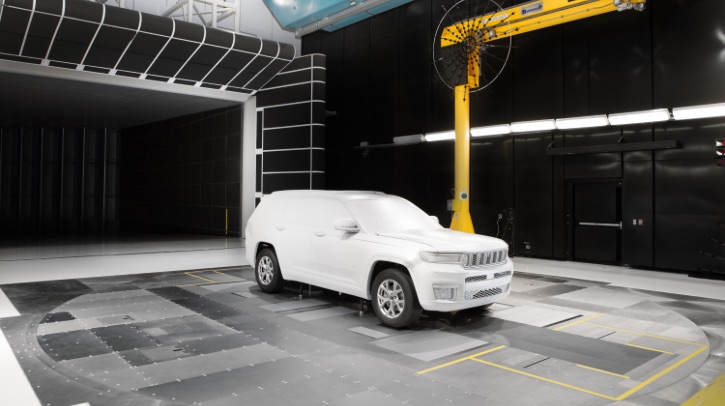To augment its aerodynamics development for electric vehicles, Stellantis has invested US$29.5m in Moving Ground Plane (MGP) wind tunnel technology at its research and technical center in Auburn Hills, Michigan, USA.
The upgraded wind tunnel can measure and reduce airflow resistance from wheels and tires, which accounts for up to 10% of total real-world aerodynamic drag. The wind tunnel simulates real-world travel while enabling test vehicles to remain static. Belts suspended by cushions of air enable wheel movement at all four corners, while a fifth belt runs longitudinally beneath the vehicle, mimicking on-road travel conditions. This realistic simulation enables more precise testing and aerodynamic improvements.
Optimizing aerodynamic efficiency is vital to increase driving range in EVs. This contributes to improved efficiency, benefiting customers with longer EV ranges. This could also reduce battery sizes, which in turn could lead to cost and weight reductions.
Mark Champine, senior vice president and head of North America engineering technical centers, said, “That’s what makes this investment so critical. By reducing drag, we improve electric-vehicle range and, ultimately, the overall customer driving experience.”
The investment in MGP technology will benefit multiple Stellantis brands that will be able to optimize aerodynamics. The upgraded wind tunnel also provides a valuable complement to virtual development tools.
The new facility also debuts vital automation capability. Changes to wheelbase and track testing, which can take as much as two hours in conventional wind tunnels, can now be done in minutes, with the according real-time data collection and increased automation reducing development time.
While Stellantis already implements MGP technology at other facilities, those sites are focused on smaller vehicle platforms. The upgraded Auburn Hills facility will be capable of accommodating larger vehicles, particularly the STLA Large and STLA Frame platforms.
The measuring platform and and turntable that comprise the heart of the MGP equipment weigh 137 tons, rest on a concrete foundation and are supported by a specially designed steel frame. The tunnel, capable of generating wind speeds of more than 160mph, has been in continuous operation since 2002.


